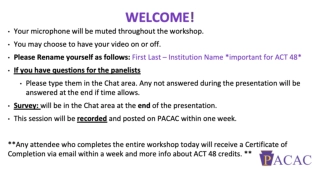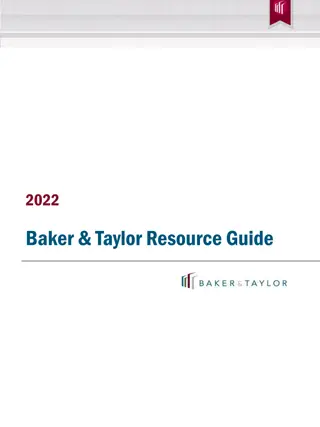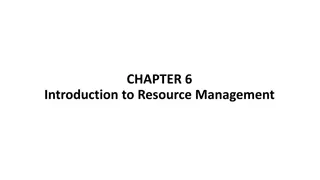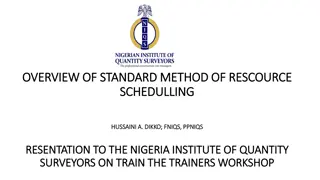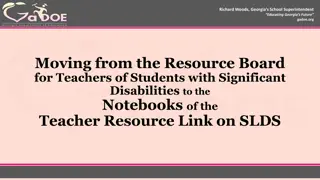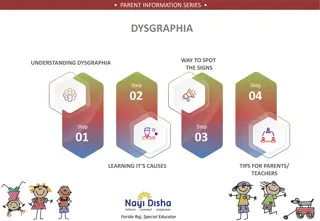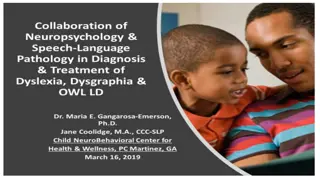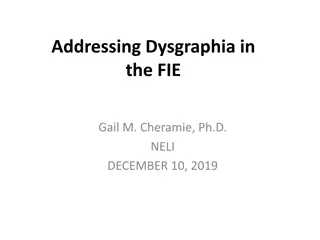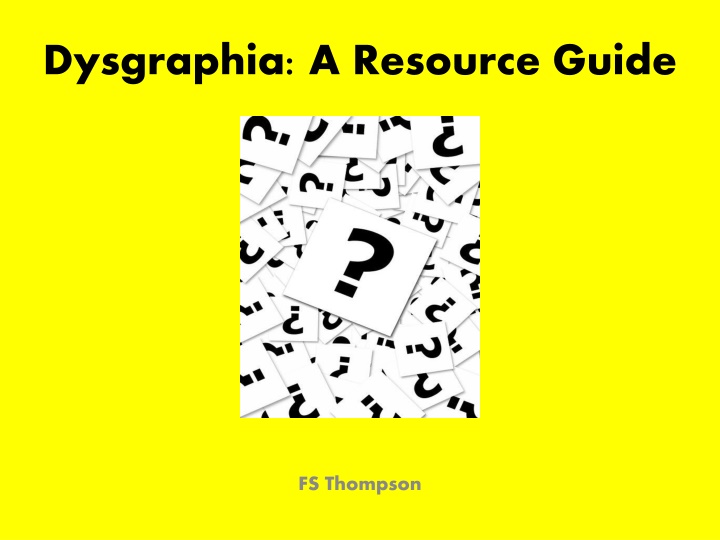
Dysgraphia: Signs, Symptoms, and Types Explained
Learn about dysgraphia, including its origins, signs, symptoms by age group, and different types such as dyslexic dysgraphia and motor dysgraphia. Understand the challenges individuals with dysgraphia face in writing and how to recognize this condition.
Download Presentation

Please find below an Image/Link to download the presentation.
The content on the website is provided AS IS for your information and personal use only. It may not be sold, licensed, or shared on other websites without obtaining consent from the author. If you encounter any issues during the download, it is possible that the publisher has removed the file from their server.
You are allowed to download the files provided on this website for personal or commercial use, subject to the condition that they are used lawfully. All files are the property of their respective owners.
The content on the website is provided AS IS for your information and personal use only. It may not be sold, licensed, or shared on other websites without obtaining consent from the author.
E N D
Presentation Transcript
Dysgraphia: A Resource Guide FS Thompson
Dysgraphia Origins of the word: According to Berninger & Wolf (2009), the word dysgraphia comes from the Greek dys ( -), meaning impaired (or bad ) and graphia ( ), meaning written . Definition: Impairment of the ability to write, usually caused by brain dysfunction or disease. FROM STEDMAN S MEDICAL DICTIONARY
Dysgraphia Signs and symptoms According to a variety of sources, a person with dysgraphia: Has difficulty thinking and writing at the same time (taking notes / creative writing) May have illegible printing and cursive writing May show inconsistencies, e.g. mixtures of print and cursive, upper and lower case, or irregular sizes, shapes or slant of letters Has unfinished words and / or letters, or omits words and / or letters Has inconsistent spacing between words and letters Exhibits strange wrist, body or paper position Has difficulty pre-visualizing letter formation Shows poor spatial planning on paper Copies or writes in a slow and labored way, and /or; Has a cramped or unusual grip (and may complain of a sore hand).
Dysgraphia Symptoms of dysgraphia by age group Messy handwriting, often illegible even by the author, is a symptom in all age groups. Children (0-6): May have an awkward pencil grip, and / or an overly tight grip May show signs of slow and labored writing The child s writing may feature inconsistent letter shape and size Writing may feature an inconsistent sequence of strokes to draw the same letter / number The child s writing may feature inconsistent spacing (between letters, words and sentences [the child cannot stay on / between the lines]) The child has a poor understanding of upper and lower case letters. Children (7-15): The child has a weak comprehension of writing (concentration is on letter formation) The child omits or does not finish words in sentences or the sentence itself. Adults: The adult has a dislike for writing, including short notes or cards The adult encounters difficulty with sentence structure and grammar There is a gap between understanding and the ability to convey that understanding in print. Gen George S. Patten Jnr.
Dysgraphia Types of dysgraphia Dyslexic dysgraphia Spontaneously written work is illegible, copied work quite good, while spelling is bad. Finger tapping speed - used to identify fine motor problems - is normal, which indicates that the deficit, does not likely stem from cerebellar damage . A dyslexic dysgraphic does not necessarily have dyslexia, while dyslexia and dysgraphia, appear to be unrelated . Motor dysgraphia Due to a deficiency in fine motor skills, poor dexterity, poor muscle tone, and / or unspecified motor clumsiness . In general, written work is poor to illegible , even if copied by sight from another document. While letter formation may be acceptable in very short writing samples, it requires extreme effort and an unreasonable amount of time to accomplish, and cannot be sustained for a significant length of time . Finger tapping speed results are below normal , but spelling skills are not impaired. Spatial dysgraphia Refers to a defect in relation to a person s understanding of space. Spontaneous written work is illegible, as is copied work. But finger tapping speed / spelling is normal. Combinations (of the above) It is possible that some children may have a combination of any two or all three of these forms.
Dysgraphia How dysgraphia impacts a child s learning skills Although not as widely discussed as dyslexia, dysgraphia is surprisingly common, according to Devine (2016), who describes it as a brain-based issue . In children, it generally emerges when a child is first introduced to writing. Children with dysgraphia may have other learning disabilities, however, they usually have no social or other academic problems. Cases in adults usually occur after some neurological trauma or it could be diagnosed in a person with autism, Asperger s Syndrome, Tourette s Syndrome or ADHD. Children diagnosed with dysgraphia often exhibit difficulties with handwriting, spelling and composing written work. The main problem seems to be perceptual; children have difficulty sequencing, so they may write backwards or out of order, according to the Arizona Office for Americans with Disabilities. Devine notes that a child with dysgraphia may have the ability to think up the most incredibly creative story, but when to trying to write it down, it would take the child hours. Devine also highlights a case study, which suggests that dysgraphia causes the child to be held back in all subjects.
Dysgraphia Impact of dysgraphia on a child s social skills According to Understood.org, as well as impacting upon a child s overall learning skills, dysgraphia can negatively affect a child s social skills. For example, it can lead to: Frustration: For kids with dysgraphia, writing can be a difficult and slow process. Being pressured to write can add to the anxiety. A lack of expression: The child speaks vaguely or talks around things. Kids with dysgraphia can find it difficult to express ideas and speak about specifics. Missing the point (humor): It can be tough for kids with dysgraphia to understand humor or language nuances, such as sarcasm. Lack of self-confidence:Children with dysgraphia may feel different from other kids and worry about whether or not they are intelligent. This can lead to low self-esteem.
Dysgraphia Testing and Diagnosis The following includes key points relating to testing and diagnostic procedures for Dysgraphia: Dysgraphia is not usually diagnosed until a child is school-aged. A psychologist or neuropsychologist can diagnose dysgraphia. The evaluation process includes gathering information about family history, the individual s developmental milestones, as well as academic history (including samples of written work), including intelligence tests, academic achievement, and activities that would help to assess the individual s fine motor functioning (such as examples of drawing or tracing). Letter formation and other types of motoric dysgraphia can be diagnosed at 5-6 years old. Some diagnostic tools, including the Test of Written Language (TOWL-4) are only suitable for students 9 years old and older, since by this age they will have had sufficient experience with writing instruction and the complexities of written language. A dynamic assessment may be able to provide insights, within which an evaluator may ask for questionnaires from parents and teachers. This may include insights into which kinds of support are most likely to help the child. The evaluator may also ask the parents to fill out some questionnaires
Dysgraphia Strategies for addressing dysgraphia Richards (1999) identifies two approaches to addressing dysgraphia. The first form uses systematic techniques that improve functioning; this is referred to as a remedial treatment. Remedial treatments seek to correct handwriting, either through direct instruction of handwriting or a fine motor program. Best Practice example 1 is a remedial treatment. The second strategy uses what are termed as bypass strategies, such as the use of technology, to find a way around the difficulties. Compensatory techniques or ways to alleviate the problem would be bypass strategies. Best Practice examples 2 and 3 are bypass strategies.
Dysgraphia: Best Practices (1) Best practice: Use of a non-intensive spell-study-spell intervention Definition: Primary Progressive Aphasia (PPA) PPA is a cognitive impairment that includes a progressive loss of language function. While aphasia is a general term used to refer to deficits in language functions, PPA emerges due to degeneration in the parts of the brain that are responsible for speech and language. It is caused by neurodegenerative diseases, such as Alzheimer s or Frontotemporal Lobar Degeneration. Introduction PPA begins gradually and is initially experienced as difficulty thinking of common words while speaking or writing. It gets progressively worse until verbal communication by any means is difficult. The ability to understand what others are saying or reading also declines in someone affected by PPA. Memory, reasoning and visual perception are not affected by the disease during early stages, so people with PPA can still function normally in relation to most routine daily living activities. But as the illness progresses, other mental abilities also decline. Adults can develop PPA at any age, although it is more common among those aged under 65. People with PPA may have a variety of different language symptoms.
Dysgraphia: Best Practices (1) Best practice: Use of a non-intensive spell-study-spell intervention (continued) Methods and results Rapp & Glucroft (2009) carried out a case study that let them examine the effectiveness of a non- intensive spell-study-spell intervention procedure. They compared the performance on four sets of words: Trained, Repeated, Homework, and Control words at five evaluations baseline, during intervention, after the intervention and at six- and 12-month follow up. The study found that: At the end of the intervention, Trained words showed a small but statistically significant improvement relative to the baseline and an advantage in accuracy over Control, Homework, and Repeated word sets. All word sets exhibited a decline in accuracy from the end of the treatment to the six-month follow- up evaluation. The researchers said this was consistent with, the degenerative nature of the illness . Accuracy on Trained words continued to be superior to that of Control words and not statistically different from pre-intervention baseline levels Repeated testing and practice at home yielded modest numerical advantages relative to Control words, but these differences were, for many comparisons, not statistically significant, according to the researchers. At 12 months post-intervention, all word sets had significantly declined relative to pre-intervention baselines and performance on the four sets was comparable. Conclusion : The researchers suggest the results from this study showed, for the first time, that behavioral intervention can provide both immediate and short-term benefits for dysgraphia in the context of PPA.
Dysgraphia: Best Practices (2) Best practice: Assistive Technology Bypass strategies involve the utilization of computers and other assistive devices to help students with dysgraphia. Definition: In the U.K., assistive technology is defined as, any item, piece of equipment, or product system, whether acquired commercially off the shelf, modified, or customized, that is used to increase, maintain, or improve functional capabilities of individuals with disabilities, according to the U.K. s Technology-Related Assistance for Individuals with Disabilities Act (1988). According to an article posted on Public School Review (U.S.) in 2009, some schools may permit dysgraphic students to use computers for some [or all] of their assignments. The same article notes that some students may be permitted to use a laptop in the classroom, noting that many leaders, believe that the support of a computer helps students with written expression struggles overcome some of their most frustrating challenges. Usage among dysgraphic students is likely to be much more widespread now, although I have not been able to locate specific figures in terms of usage rates at the time of compiling this resource.
Dysgraphia: Best Practices (3) Best practice: Assignments: Structuring suitable alternatives In an article published by the (non-profit) Davidson Institute, Jones suggests some practical steps that teachers can utilize when issuing assignments to students with dysgraphia. Jones suggests that dysgraphic students should be able to substitute a written assignment with an oral or visual assignment. This option would require the teacher to produce a rubric to define exactly what the assignment should include. Another practical suggestion is the use of cooperative writing projects, in which students play different roles, such as, the brainstormer , the organizer of information , the writer , the proofreader and the illustrator . When referring to modifications , Jones suggests reducing the length requirement of assignments, stressing, quality over quantity . ADDitude, a leading media network aimed at parents and adults living with attention-deficit disorders, suggests the removal of neatness as a grading criterion and allowing students to replace full sentences with key words. *Dysgraphia Accommodations and Modifications (1999)
Dysgraphia: SnapType SnapType: Handy app provides a worksheet solution for dysgraphic students SnapType enables students to keep up with their peers in class even when their penmanship holds them back, according to the company s official iTunes app description. Used in tandem with an iPad or iPhone, SnapType allows dysgraphic students to complete worksheets easily and more quickly than if relying on their handwriting. Amberlynn Slavin, who developed the concept when she was a student, came up with the idea when working with a dysgraphic student who struggled to complete the worksheets he received from his teachers. The child s occupational therapist was impressed with Slavin s idea, encouraging her to take it further. After working with several developers, the app finally made the Apple Store and now has over a million downloads. Slavin recently launched an Android version. It would, of course, be important for teachers to be aware that a student wished to use this app - I am certain most of them would be delighted to discover that a dysgraphic student would be better able to successfully complete a worksheet thanks to this useful app.
Dysgraphia: SnapType SnapType: Testimonials and reviews This tool was designed as a one-stop shop for annotating printed materials on a device, and it hits its mark. Although the platform is simple and gives users limited options for adjusting font or colors, it is incredibly easy to use, is user-friendly, and does exactly what it says it will. Kids can tap to add a text box, adjust the size using the slider at the top, and share their document quickly and seamlessly. For kids with visual-spatial challenges or who struggle to write clearly and efficiently, SnapType might be a game changer, especially when paired with a device's text-to-speech feature. Common Sense Media (rated **** [four out of five stars]) This app has really helped my daughter [3rd grade]. She can do her classwork and homework on it and email it to her teacher. No one [including herself] could read her writing so this is fantastic. She picked it up instantly, it is very intuitive and easy to use. The only thing that could make this better would be enabling it to read text to speech on the worksheets. That is probably wishful thinking though. You can have your ipad read the words you type by enabling it in your accessibility options but being able to read (text to speech) the directions and word problems would be fantastic. Even so, I rate it 5 stars. C Moore Blessed, iTunes Preview (rated ***** [five out of five stars])
Dysgraphia Resources Descriptions of three (+1) useful resources relating to dysgraphia What is dysgraphia? National Center for Learning Disabilities (Video) https://www.youtube.com/watch?v=jmBg_BvDL-c (Target: General [various]) I think this short video presentation by Dr Sheldon H. Horowitz, provides an excellent overview of what dysgraphia is, which is why I have listed it first. I think this could be useful for many different groups, including parents, teachers, students, as well as interested members of the public. Ldonline (web site) http://www.ldonline.org (Target: Teachers and educators) I recommend this resource, as it does not require a complex sign up procedure and, therefore, it provides quick-and-easy access to quality information on dysgraphia (and other learning disabilities) for teachers / educators. I like the way it provides a connection between home and school, while offering voices to children with learning disabilities (this short description, for example, relates to dysgraphia). Edutopia (web page) https://www.edutopia.org/article/assistive-technology-resources (Target: Teachers and educators) Although this webpage is not necessarily up-to-the-minute , it contains a wealth of information about the numerous forms of assistive technology available today. Cassandra Vlog #17 (Video Log [one of a series]) https://www.youtube.com/watch?v=HjO27vEVZJQ&t=107s My plus one resource appears to be useful as it may appeal more directly to young people.
References Arizona Office for Americans with Disabilities (n.d.). Educating Children with Learning Disabilities. Retrieved June 7, 2017 from http://know-the- ada.com/t1/educating-children-learning-disabilities.html Bates, M. (n.d.). Dysgraphia. Dyslexia Reading Well. Retrieved June 16, 2017 from http://www.dyslexia-reading-well.com/dysgraphia.html Berninger, V.W.; B.J. Wolf (2009). Teaching students with dyslexia and dysgraphia: Lessons from teaching and science. Baltimore, Maryland: Paul H. Brooks Publishing. pp. 1 240. Chen, G. (August 13, 2009). Does your child have a written expression disability? Dysgraphia symptoms and public school solutions. Public School Review. https://www.publicschoolreview.com/blog/does-your-child-have-a-written-expression-disability-dysgraphia-symptoms-and-public-school- solutions Crouch, A. L., & Jakubecy, J. J. (2007). Dysgraphia: How it affects a student s performance and what can be done about it. Teaching Exceptional Children Plus, 3(3) Article 5. Retrieved June 3, 2017 from http://escholarship.bc.edu/education/tecplus/vol3/iss3/art5 Devine, A. (2016), Literacy for Visual Learners. London, United Kingdom: Jessica Kingsley Publishers. Frye, D. (n.d.). How to treat the symptoms of dysgraphia. Additude Magazine (online). Retrieved June 25, 2017 from https://www.additudemag.com/dysgraphia-treatment-for-children-and-adults-at-school-or-home/ Jones, S. (May / June 2011). Interventions for dysgraphia. Davidson Institute Newsletter. Retrieved June 14, 2017 from http://www.davidsongifted.org/Search-Database/entry/A10709 National Institute of Neurological Disorders and Stroke (n.d.). Dysgraphia Information Page. Retrieved June 7, 2017 from https://www.ninds.nih.gov/Disorders/All-Disorders/Dysgraphia-Information-Page Rapp, B. & Glucroft, B. (2009). The benefits and protective effects of behavioural treatment for dysgraphia in a case of primary progressive aphasia. Aphasiology, 23(2), 236-265. Richards, R.G. (1999) When Writing's a Problem, Riverside, CA: RET Center Press. Synapse (n.d.). Autistic Spectrum Factsheet, Dysgraphia. Retrieved June 5, 2017 from http://www.autism-help.org/comorbid-dysgraphia- autism.htm The Understood Team (n.d.). Retrieved June 2, 2017 from https://www.understood.org/en/learning-attention-issues/child-learning- disabilities/dysgraphia/4-ways-dysgraphia-can-affect-your-childs-social-life

